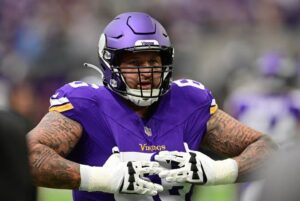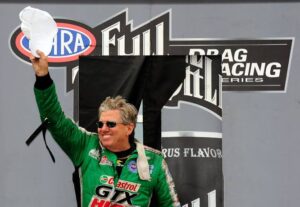Sadly, the Minnesota Vikings lost Kirk Cousins to an Achilles injury in their 24-10 win over the Green Bay Packers on Sunday.
The timing of the injury is brutal for a Vikings team that had clawed its way back to 4-4 after starting the season 0-3. Currently occupying the seventh seed in the NFC, Minnesota had a clear path to the postseason with the fifth-easiest remaining schedule in the NFL per DVOA. For Kirk personally, the injury also comes at a terrible time, because he will enter free agency after this season.
The scarcity of quality quarterbacks, combined with the position’s outsized importance, makes it the highest-paid roster spot in the NFL. Many teams spend years searching for a viable starting QB, which makes it virtually impossible to add one when your starter goes down during the season. Furthermore, Cousins was playing some of the best football in his career during the San Francisco 49ers’ game and against the Packers before suffering the injury. In losing him, the Vikings will drop from having near-elite QB play to striving to play competently.
The Vikings had Nick Mullens as their backup going into the season, but they recently put him on IR with a back injury. With ann unclear timetable for his return, Minnesota was initially looking at rookie Jaren Hall, who managed to preserve the win against Green Bay, as the potential starter. Then, before the trade deadline on Tuesday, Kwesi Adofo-Mensah pulled a late-round pick swap for Arizona Cardinals’ QB Josh Dobbs.
At this point, it is unclear whether the Vikings plan for Hall or Dobbs to be the starter for the remainder of the season. In his post-trade press conference, Kevin O’Connell indicated that the plan is for Hall to start on Sunday against the Atlanta Falcons.
Regardless of who ends up beyond next week, Dobbs and Hall have some similarities. Dobbs is taller, but both are similarly talented. We’ve seen Dobbs be effective as a runner and scrambler this season. Only Lamar Jackson and Jalen Hurts have rushed for more yards than he has. Hall also displayed mobility at BYU, something Cousins lacks. Neither Dobbs nor Hall have elite arm strength, but both have quality arms for the NFL level, similar to Cousins. But despite being in the NFL since 2017, Dobbs lacks a track record of playing experience. He’d thrown fewer than 100 passes in his career before starting the first eight games for the Cardinals this season.
Cousins is one of the most accurate passers in the NFL, and ranks third among 36 passers with adjusted completion percentage of 80.5% per PFF. Dobbs ranks 32nd in the same stat with an adjusted completion percentage of 71.2%. Interestingly, Cousins has a nearly identical time to throw as Dobbs this year, at 2.71 seconds to 2.74 seconds. However, that seems to be because each team has constructed their offense differently.
Dobbs had dropbacks last under 2.5 seconds 48.8% of the time in Arizona, ranked 13th. Meanwhile, Cousins’ rate was only 41.3%, 30th in the NFL. The Vikings have been fond of longer-developing passing concepts to attack the intermediate area of the field, and have generally eschewed the quick game. Dobbs’ numbers suggest that the Cardinals run a heavy dose of quick game, with the average time to throw inflated by plays where Dobbs scrambles.
At BYU, Jaren Hall’s adjusted completion percentage split the difference between what Cousins and Dobbs have done, at 75.9%. His time to throw, at 2.78 seconds, was quite similar to both players. However, from the three games I charted when I scouted Hall, BYU ran quick game about 46% of the time, similar to the rate Dobbs appears to have for the Cardinals.
Having established the differences in their playing styles, let’s take a look at what the Vikings might be able to do to help their new starter.








